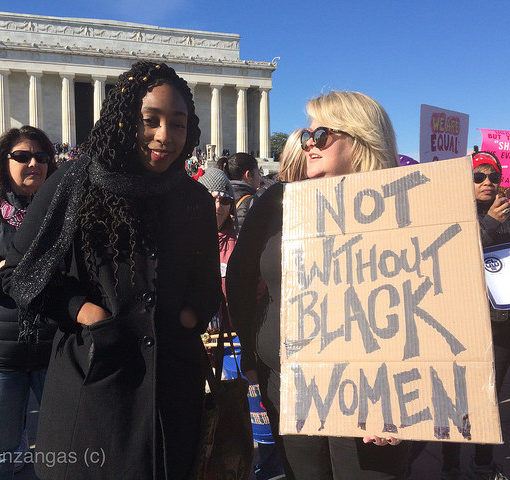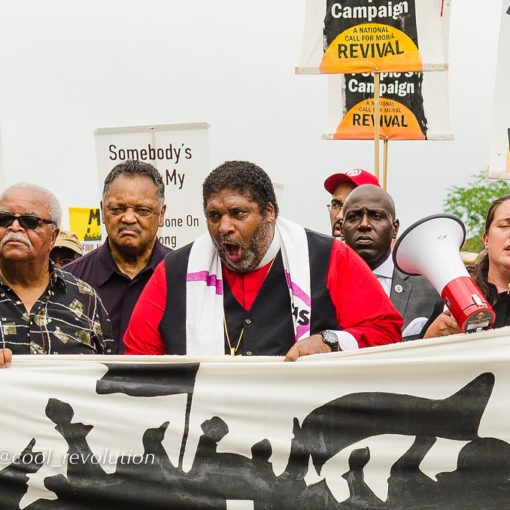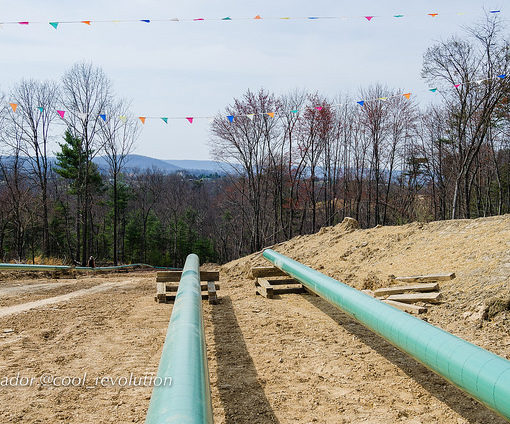Washington, DC—The student led Gaza solidarity protest at George Washington University Yard was raided in the predawn hours of Wednesday, May 8. Police arrested 31 and charged them with unlawful entry while four were additionally charged with assault of a police officer. All those arrested were released by the early afternoon of the same day. Jail supporters waited for each student’s release and provided emotional support, food, drink, and comfort to them once they were released. Nearly all those arrested were students and none of those arrested were reported as being “outside agitators” as the University Administration claimed had taken part in the camp.
According to GW Hatchet, a campus publication which has closely covered the Student led Gaza Solidarity Camp since its beginning, hundreds of police raided and cleared the camp with several police using pepper spray against protesters. A report of any injuries was not available. Live media coverage of the event was not possible because police had forced closure of H Street before the raid.
Students had renamed University Yard (U-Yard) the Liberated Zone, Gaza Solidarity Camp, and Solidarity Camp. The U-Yard was 1 day short of reaching a 14-day milestone of continuous occupation, making it among the longest running university protests in the country. The students vowed to remain encamped in University Yard in defiance of University Administrators orders to leave, or stay until the university administration met their demands.
The items left in the Gaza Solidarity Campus in the early morning hours were reportedly thrown in the trash after police arrested and removed the students refusing to leave. This included all the personal tents, the library tent and its remaining books, and the people’s garden, A box of Korans was among the books left in the library and available for the public as of late Tuesday night.
Students at other local Universities had followed GWU students’ example and staged Gaza Solidarity protests at Howard, Gallaudet, and American Universities. Many social justice movements in the community also joined with students’ efforts to message the press and the public about the need for an immediate ceasefire in Gaza; the urgency for restoration of basic necessities such as food, water, and medical care needs; and an end to the occupation of the Gaza territory.
Students Were Prepared To Stay Indefinitely
From a tactical point one could argue students could not have picked a less defensible place to stage an occupation. This is because the encampment was occluded on three sides by academic buildings with only narrow exits through sidewalks at the southern corners near Bell and Lisner Halls.
The remaining access from U-Yard to H Street was largely blocked by a 4-foot wall and bushes. The H Street access was a narrow one-way street already blocked by police cars at its two ends. Any police plan to raid and evict the GWU “Liberation Zone” and prevent support from assisting the students could do with minimal teams and few riot police—or so it would seem.
But the spirit of students and community supporters had from its outset made the GWU Gaza Solidarity encampment vibrant and wecoming to the community. The students created a safe space for those sympathetic to the Palestinian struggle and it attracted many students from other Universities as well as visitors from the community. It was self-evident that those who went to the encampment found promise and hope in the students’ messages about ending the Israeli military brutality and freeing Gaza with a path towards statehood.
One could also argue students in U-Yard had by the early Wednesday morning eviction, succeeded. Their strategy of pushing the Free Gaza narrative into the front pages of American press by engaging the DC, Maryland, and Virginia community along with and dozens of international press organizations, was evident throughout their occupation with press coverage of daily activities.
There were always students building art projects and painting banners with a focus on the Palestinian struggle in Gaza. There were rallies in U-Yard almost every day. The students wanted the focus to be on Gaza, not on them, and they went to great lengths to keep the discussion on Palestinian rights and on deteriorating conditions in Gaza. It was not their intention to be the story. But by Tuesday night, on May 7, so much attention was already being focused on the students as the result of evictions from Universities in other cities that they became intertwined in the story about Gaza.
Some could argue that they were becoming somewhat of a international sensation, both from the perspective of the international press coverage but also from the flailing narrative imposed against them from detractors saying that they were “potentially dangerous” and using “hate language” tantamount to “antisemitism.” None of those types of behaviors were ever displayed for if they had been, such instances would have been publicized in the media. And the extensive community support the students enjoyed would have quickly dried up.
The student press liaisons engaged international media every day at 2:00 pm to spread the story about Gaza in their narrative beyond and they succeeded in reaching a wide range of international press reporters with their messages. Their messages were on topic about Gaza and efforts to dialogue with the University Administration.
Aljazeera set up a mobile news station on H Street and broadcasted it’s afternoon report about the Gaza Solidarity encampment. Aljazeera reported from U-Yard every day since the students began their occupation. One of its journalists spoke to DCMG about why they think the student’s’ messages are important and how the wave of protests across the U.S. is sending out beacons of hope in Gaza and in the occupied territories. The journalist shrugged at an Israel Government decision Sunday to close the Aljazeera news station in Israel, and confiscate their equipment, saying, “It will not stop us from reporting the truth about Gaza.”
Other press organizations including local reporters, news organizations from Turkey, Jordan, South America, Asia, independent media, and among many others, a documentary team was videotaping a full-length report to be released later this year.
On Sunday night the U-Yard encampment was visited by a large contingent of about 100 from Jewish Voice for Peace. JVFP prayed from Hebrew scriptures for about a half an hour and then and sang songs. Many watched as they prayed. Earlier that evening a nightly Muslin prayer had occurred just after sundown. The U-Yard students welcomed and respected faiths and diversity throughout its occupation.
The community embraced the Liberated Zone as well. There was a steady stream of food and supplies sent from area businesses. There was so much support in supply delivery that students generously offered anyone visiting the camp to eat and take as much as they liked and needed.
Students Set Up An Inclusive and Diverse Safe Space
Then there were the students themselves; concentrating on completing their final courses, writing their course theses, and keeping the Liberation Zone clean and clear of obstacles, despite the pressures on them. The camp tasks seemed mundane, and included many such as serving catered meals from the kitchen tent, staffing the medical tent, picking up and removing trash, and hosting classes, but were are all being efficiently completed.
On Saturday afternoon several were giving instruction about social justice concerns related to the Attack on Gaza. A group of activists were giving a class about excessive consumption and resource misallocation in the center of University Yard on Sunday. About 50 sat listening intently. There are several classes given by both students and community social justice activists every day. Many different groups found affinity with students’ zeal, energy, and undying belief in themselves and their purpose.
The medical tent was always staffed with at least three medical persons. They were both welcoming and helpful, always asking how they could help anyone who walked to the tent.
This same approach was seen at the food and supply tents which were stationed outside the U-Yard on H Street. These tents were always staffed and the students running them were helpful. No one was refused a meal or an item they needed.
Political Pressure Brought Against Encampment
The House Committee on Oversight, a Committee of the House with the responsibility over local governmental affairs in Washington DC, planned a meeting on Wednesday afternoon about the student protest at George Washington University. The Committee planned to call Mayor Muriel Bowser and Police Chief Pamela Smith to testify Wednesday afternoon but following the raid and removal of the encampment, the House Oversight Committee canceled the hearing.
George Washington University Administrators met with several organizers to hear their demands last week but made no comment and left the meeting after organizers iterated their demands. Another student provided DCMG a copy of a general email that GWU President, Ellen Granberg and Christopher Bracey, Provost and Executive Vice President for Academic Affairs, sent to students telling them to immediately cease their protest and leave University Yard.
The email accused the students of engaging in “hateful language” and ordered them to “vacate University Yard immediately.” The email further offered Anniversary Park, as an alternative for daily protest use daily until 7:00 p.m. The students declined several requests to leave so it was then that University Administrators decided to call DC police to assist GW police in eviction, according to the email. The first eviction attempt failed as students overwhelmed the police and de-arresed a student. Seven students were subsequently suspended.
The GWU Student Campus Gaza Solidarity Zone Evolved Into A Community Activity
If one had visited the U-Yard over a period of days they could see the students gaining confidence and courage about their protest. The number of tents had grown from 20 on the first day to over 160 by the weekend. Several student supporters from Columbia University in Yew York City travelled to GWU and put up a Columbia University Flag which was repurposed into a banner and painted over, reading “Evicted So We Came Here.” Columbia University students were evicted on Friday night from the Hamilton Hall Administration building after negotiations towards decampment fell apart.
The Library Tent, named after famed Poet and Gaza University Professor Reefat Alareer, killed in an Israeli airstrike on December 6 last year, doubled to a second carrousel and of books covering diverse topics on community interests. A person from the company which published his book, “Gaza Writes Back,” left multiple copies of the book as well as other books at the memorial library. Three women from The Black Radical Mutual Aid Library brought more books on a cart Tuesday night, just before the raid. Their delivery of several dozens books were free to anyone who wanted one. The books were quickly picked up by students and visitors. More books were coming into the library than were going out and the library was a popular attraction.
The metal barricades were removed from University Yard center on Saturday. It freed up more space for student’s use and the area was turned into a miniature school with several open tents placed there to create an open air classroom. On Sunday afternoon many took part in a massive embroidery marathon making Palestinian flags.
A Palestinian flag continued to fly on a flag pole in front of Lisner Academic Hall. Students had raised the flag, replacing the American flag last week. The University administration replied by unfurling a giant three-storied 50 foot long by 30 foot wide American flag and draping it from the roof of Lisner Hall. Students replied to this by staging a light show on Friday night over the flag and transformed it into an illuminated photo of President Joe Biden with the caption “Genocide Joe.” On Saturday a tussle between George Washington University Police and students resulted in removal of the Palestinian flag from the flagpole. Students responded by putting flags on their tents and stringing banners from the trees. The University had boarded up entrances to the academic buildings around U-Yard with plywood and had assigned security guards in front of each building facing University Yard. But there was no evidence the Administration needed take such precautions because the students were neither destroying property nor breaking into any buildings.
The People’s Garden had grown too as more plants were added; nasturtiums poppies, oregano, aloe, parsley, and magellan have been added. Some of the tent had shoes and potted plants placed neatly outside them.
The Liberated Zone took a deep washing from mother nature over the weekend with rain falling from Friday night to Sunday night, dampening the tents and turning parts of the turf into muddy parcels. Students stayed off the grass as much as possible and collected most of the banners and signs before they were damaged. Sleeping bags and laundry were collected and washed.
The medical team put up water resistant tarps and moved most of the spare medical supplies into the main tent to prevent water damage but it still took days for everything to dry out. The staff continued helping many with medical services upon request.
May 4th was the 53rd anniversary of the Kent State University shootings of unarmed students protesting the Vietnam War as Ohio National Guardsmen moved in to remove hundreds of students protesting U.S. bombing of Hanoi and Cambodia. Michael Marceau, a Vietnam Veteran, and President of Local Chapter 016 of Veterans for Peace, visited the Liberation Zone wearing a sign reminding students and visitors that University protests were not the first time that forces of the State were sent in action against unarmed students and it wasn’t going to be the last time. He visited the students to warn the of possible outcomes when one goes up against the State and described from memory the State response. He was then a Soldier and deployed to Vietnam. He described to students how the war and the Kent State University massacre changed him.
With Four students killed and nine wounded, the National Guard Unit involved actually enflamed anger and tilted national opposition against the Vietnam War which hastened the U.S. exit from Vietnam.
The effect of the university Gaza protests is yet to be seen. The story of the fight to liberate Gaza is not ended. Over 2000 students have been arrested at universities nation wide. More protests are spreading at universities around the world. And there are signs political opposition in the U.S. is shifting against the Israeli government invasion of Gaza and against U.S. military support of Israel. This shift was evident at the White House the same day of the U-Yard raid.
On Wednesday night the White House announced it would cancel certain military aid and munitions to Israel if that government proceeded in a ground invasion of Rafah, the last city not so far virtually destroyed by Israeli bombing. According to a published report in The Guardian, President Joe Biden said that he would not supply weapons that have historically been used against cities such as Rafah. The report iterated that further weapons shipments such as guided bombs could be canceled if Israeli ground forces invaded Rafah but made it clear other types of military support of the iron dome would continue. It was the first time Biden publicly announced the possibility of canceling military aid shipments to Israel.
On the last night of the GWU Gaza Solidarity Campus students held a 2 hour rally with speakers and chanting that led into the night. Soon thereafter several hundred marched to F Street House, office building or residence of the University President. All the lights were turned off but police blocked entrance to the steps. The protesters were spirited and remained at H Street House for nearly an hour. It was the last action taken by students before their eviction from U-Yard. Video of some scenes from GWU Gaza Solidarity Encampment is below.






